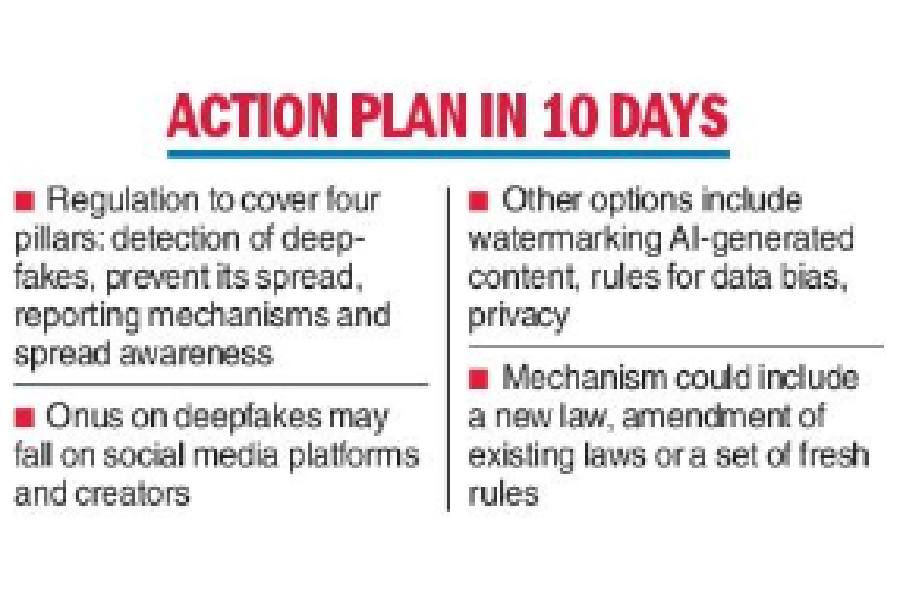The government is planning regulations that may impose penalties on both creator and platforms hosting deepfakes.
“Deepfakes are the new threat to democracy and weaken trust in society. We will start drafting regulations today, and within a short time, perhaps next few weeks, we will have a new set of regulations….. this could be in the form of amending existing framework or bringing new rules, or new law,” IT minister Ashwini Vaishnaw said on Thursday.
He was addressing the media after a meeting with industry stakeholders, social media platforms, lobby groups and academicians on Thursday.
Amid some celebrities reporting their faces being manipulated onto another video, new protection regulations being considered will look at measures including watermarking AI-generated content, deepfake detection, rules for data bias, privacy
and guards against concentration.

The government plans to come out with an action plan in 10 days to deal with deepfakes, Vaishnaw said.
“Over the next 10 days we will come up with actionable items on the four pillars — detection, prevention, reporting and awareness (around deep fakes),” Vaishnaw added. The IT Ministry will again meet social media platforms in the first week of December.
The mechanism could include a new law, amendment of existing laws or a set of fresh rules. There would be penal clauses including financial implications and legal recourse.
The participants at the meeting agreed on the four pillars of action:
Detection: Deepfake content should be detected before and after such content is posted
Prevention: There should be an effective mechanism for preventing the propagation of deepfake content
Reporting: Effective and expeditious reporting and grievance redressal mechanisms should be available
Awareness: Mass awareness on the issue of deepfake should be created
Pointing out that deepfakes are “not free speech”, Vaishnaw said, there needs to be some “labelling or watermarking” so that clear identification be made across content.
Provisions relating to penal action will be discussed in future meetings while the draft rules, once ready, will be put out for public discussion and suggestions.
The government, he said, was not averse to the idea of having its AI-enabled tools to fight deepfakes.
“Social media companies acknowledged that the problem of deepfakes is not restricted to India. But, it is a global issue. They agreed that there needs to be ways to tackle this problem,” Vaishnaw said.
A few weeks ago, a digitally altered video of actor Rashmika Mandanna went viral, highlighting the worries posed by the easy availability of the technology that can alter reality.
As the video circulated widely, the ministry warned social media platforms that failure to remove deepfake content could attract penalties such as losing the so-called safe-harbour provisions.
The safe-harbour provision gives internet platforms legal immunity against content shared by users on the platforms.
In his opening remarks at a virtual summit of G-20 nations on Wednesday,
Prime Minister Narendra Modi called on global leaders to jointly work towards regulating AI, and raised concerns over the negative impacts of deepfakes on society.

